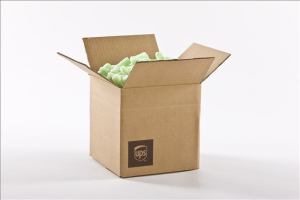Green Packaging, Reusable Pallets, Totes and Boxes
[tweetmeme source=”@nancyparmer” only_single=false]
How many of you are aware of a bill that was passed back in 2000 by Two Congress members from California that provides incentives for businesses to reuse pallets and plastic containers? Representatives Dana Rohrabacher, a Republican, and Bob Matsui, a Democrat, introduced the Landfill Reduction Act of 2000 (HR 4916), which would provide tax incentives to businesses that stop using disposable wooden pallets and cardboard boxes.
Under the terms of the bill, farmers, retailers, manufacturers and poolers of reusable plastic or wooden pallets and plastic containers could write off the cost of capital investments to convert to these environmentally friendly products. This is a great opportunity for companies to take a real look at the packaging. Many companies do not realize the impact packaging has on the environment not to mention the amount of money that is used to get rid of corrugated boxes and wooden pallets.
Packaging is a way to protect the contents of your shipment. It can help control costs by minimizing package dimensions, weight and required transport space. Its design, format and materials content, for better or worse, constitute brand statements. And packaging speaks volumes about a company’s desire to reduce your overall impact on the environment.
Consumers, meanwhile, are looking for greener products. A recent Accenture study of 7,500 consumers in 17 countries found that 64% say they are willing to pay a higher price for products and services that produce lower greenhouse-gas emissions. E-tailers are therefore thinking strategically about making their packaging both cost-effective and environmentally friendly.
That’s heavy lifting for a humble piece of cardboard or plastic. But sustainable companies pride themselves on embracing green practices are discovering what’s on the outside of a product can be as important as what’s on the inside.
Stronger containers usually mean using additional materials and adding more weight, which can run counter to green principles. In other words, it is a balancing act, so check the specifications of the product manufacturer and use packaging with just enough strength to provide damage protection – and nothing more.
Here are some key items for companies to consider when integrating green practices into their operations.
- Working with suppliers to receive more durable and reusable pallets.
- Reuse packing material received by employees.
- Participate in a local business materials exchange.
- Use reusable plastic totes to transport materials to regional offices.
- Use recyclable paper wraps.
- Explore new recycling and waste prevention approaches.
- Obtaining upper management support and show all cost savings to triple bottom line.
- Applying a comprehensive approach to waste management and establishing a Waste Management Committee representing all departments involved.
- Provide ongoing employee education to improve environmental awareness.
- Work closely with the end users of a product to assess their needs.
- Build long-term relationships between suppliers and the central purchasing department.
- Redesign product packaging to decrease the amount of materials used.
- Increase postconsumer content of packaging but always ensure to adopt all federal and state guidelines if applicable.
- Try to reuse incoming packaging materials for outgoing product packaging.
- Establish preferred packaging guidelines for suppliers.
- Reduce the thickness of corrugated used in packaging material.
- Review the feasibility of your primary customers developing a pallet return program to reuse pallets.
- Review the feasibility of reusable cartons for shipments that will have returns.
- Send unusable wooden pallets to a compost facility.
- Increase recycled content in corrugated containers.
Every part of the manufacturing process, from raw materials delivery to the transportation of products to customers, offers the potential for substantial packaging reductions.
Another strategy is to design containers with handling and storing efficiency in mind, such as containers that fold out flat after use, allowing empties to take up a minimal amount of space. Nest-ability is another feature that saves space, allowing containers to be fitted inside each other after use. In addition, moving containers is easier, both full and empty, if the tops and bottoms are designed to lock into each other. This stacking efficiency makes it possible to maximize space in warehouses and delivery trucks.
Read more: Strategies For Integrating Green Packaging.

 Hi, and welcome to my blog. My name is Nancy Parmer, Sustainability, Customer Solutions at UPS.
Hi, and welcome to my blog. My name is Nancy Parmer, Sustainability, Customer Solutions at UPS.

Pallets are normally used in packaging industry to safeguard the goods during transit. Wooden pallets ensure more strength and high durable capacity.
Reused Cardboard Boxes Reuse,Reduce,Recycle